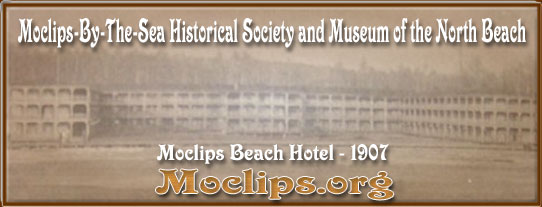A
group of Finnish men came to this site as squatters in the 1930's. These
men were clam diggers and considered "exiles" from society. They
trusted no one and often fought among themselves with knives. They
would not speak to strangers. They would often pretend to not
understand English and refer outsiders to the clan's spokesperson
whom they called Shorty "Cockeyed" Thompson. The
following is a quote from Ralph Minard in the book, Lady on the
Beach written in 1952 by Norah Berg:
"They
are strange men, hard drinkers, with their own code of honor. You're
their friend or their enemy. They have no feelings in between
that for anyone. They are also the most satisfactory workers
I've ever employed. Their word is the only contract you need
with them; they would rather die than not carry out a bargain".
Prior
to the Finns arrival, Oyehut was a gathering place for the local
Indians. The peninsula is narrowest at this point so it made
it easier to reach the harbor. Both the Native Americans and
the white settlers crossed this strip of land from the harbor to
board horse and wagons for the long and slow trek up the beach to
Taholah.
There
has been a long-standing feud between the community of Oyehut and
the State of Washington on the correct spelling of Oyehut. The
state insists it is spelled without the "e" - OYHUT.

